Juan Carlos Osorio became the new head coach of Zamalek’s football team on 14th April 2023, when the title holders were in fourth place in the Egyptian Premier League. Since then, the former coach of the Mexican national team has been trying hard to improve the performance of Zamalek Club on all levels. Although he suffered a little initially, the team’s performance has recently improved, winning six consecutive matches.
One aspect that Osorio worked on improving is set pieces. The team became more effective from set pieces, especially in the attacking corner kicks. Zamalek had only scored two goals from corner kicks during the previous 25 rounds before Osorio took over as Zamalek’s coach. Since then, they have scored three goals in nine matches in the Egyptian Premier League, which is a significant improvement, especially after Mahmoud El-Wensh was injured and Hossam Abdelmaguid joined Egypt national under-23 football team for U-23 Africa Cup of Nations, as they are the best in the team aerially.
This tactical analysis shows the most important tactics of Zamalek in attacking corner kicks and how set-piece analysis contributed to the improvement of Zamalek’s results in the recent period.
Short corners
Most Egyptian Premier League teams prefer the man-marking defending system at corner kicks, which encouraged Osorio to exploit short corners, especially in the absence of El-Wensh. This led to a decrease in the number of outstanding players in aerial duels who can overcome their markers in aerial duels. Based on what was mentioned earlier, Osorio has opted for several different tactical approaches, including the short corner, which has several benefits that we will explain in detail.
In the first picture, the opponent defends with a man-marking system with only two zonal ‘green’ defenders and one ‘yellow’ player in the rebound zone. The first advantage of the short corner is that most teams in Egyptian Premier League defend with only one defender, in blue, against the short corner without giving any explicit instructions to a specific nearby defender to go with him, making the situation equal 2v2.
It is also evident in the first picture that one of the most critical weaknesses in the man-marking defending system is that it is easy to evacuate the targeted area (in black) because the defender’s primary reference is the opponent who moves him wherever he wants.
In the second picture, the situation is 2v1, in green, and another advantage of the short corner appears when the taker passes the ball to his mate, and then the two zonal defenders move forward in yellow arrows. Here, the teams in the Egyptian Premier League react differently; some stick to the man-marking system while others try to reorganise their defence in a high line, as happened in this case. In the same picture, it is clear that the three blue defenders are trying to move up with the two zonal defenders, in yellow, to form a line while three defenders remain with their markers.
In the third picture, this is evident in a big way. In green, the organisation was handed over in the form of a line while continuing to move up. It is clear that Zamalek’s first targeted player, in the yellow arrow, has become free without marking. The problem is that there are still three players in blue who are defending with a man-marking system, which is a big problem because this situation requires quick reorganisation with one reference at the same time.
In the fourth picture, we will observe the three players still marking with a man-marking system. The player in green quickly moves to help his teammate against the short corner in case Zamalek’s player shoots the ball directly; the ‘yellow’ player leaves his man, Seifeddine Jaziri, who will also go to the far post, standing with the line at the hearing of his coach shouting to move up. The blue player remained with his man.
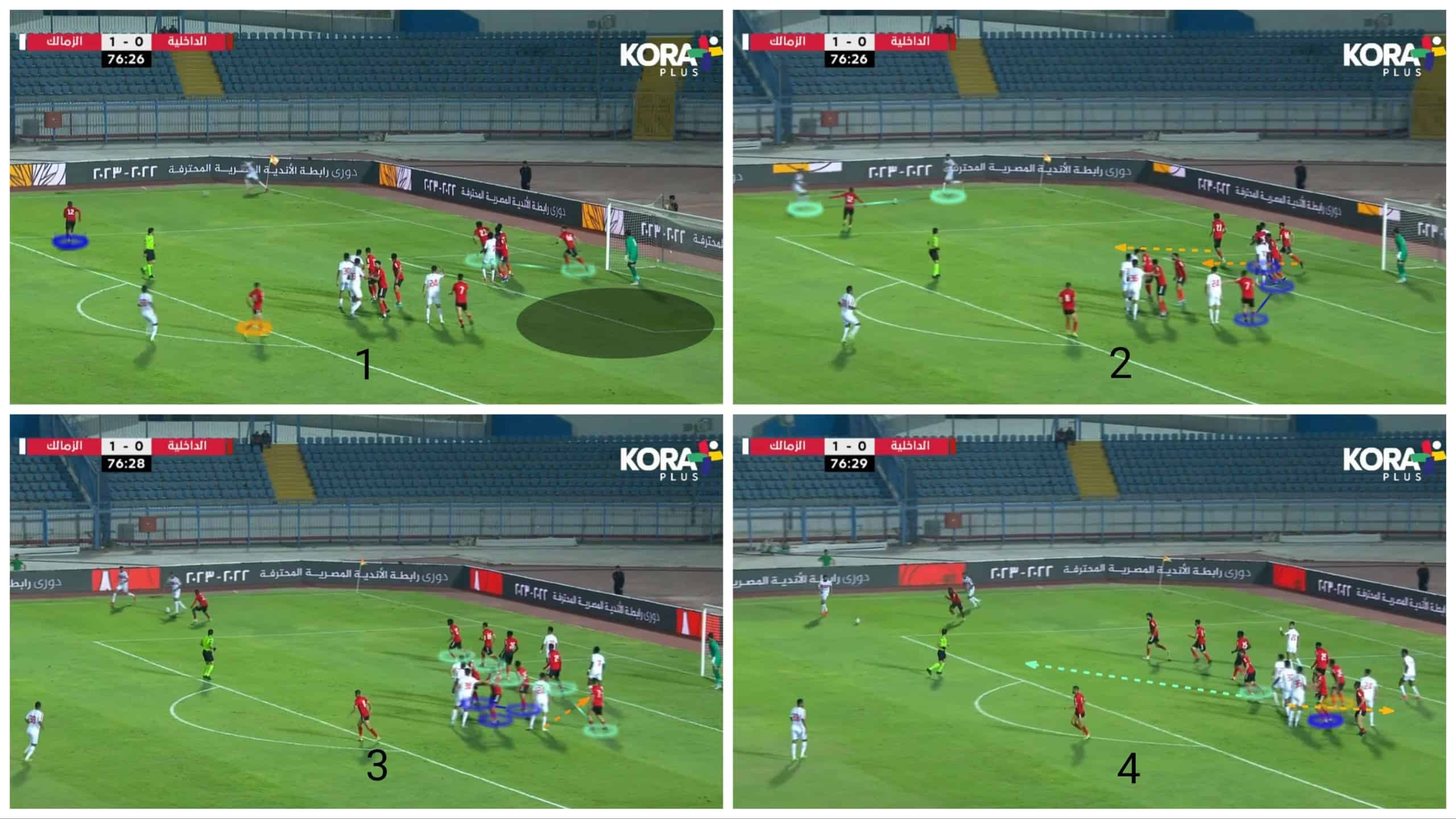
The result of this lack of organisation is that two players become free on the far post but can not reach the ball, as shown below. Another observation in the previous situation is that one of the advantages of the short corner is the difficulty of the defender seeing his marker and the path of the ball at the same time, especially when focusing on adjusting the line with his teammates. This is called an orientation problem, especially when the attacker is on the far post on the blind side of the defender, which helps in the attacker’s isolation from aerial conflicts.
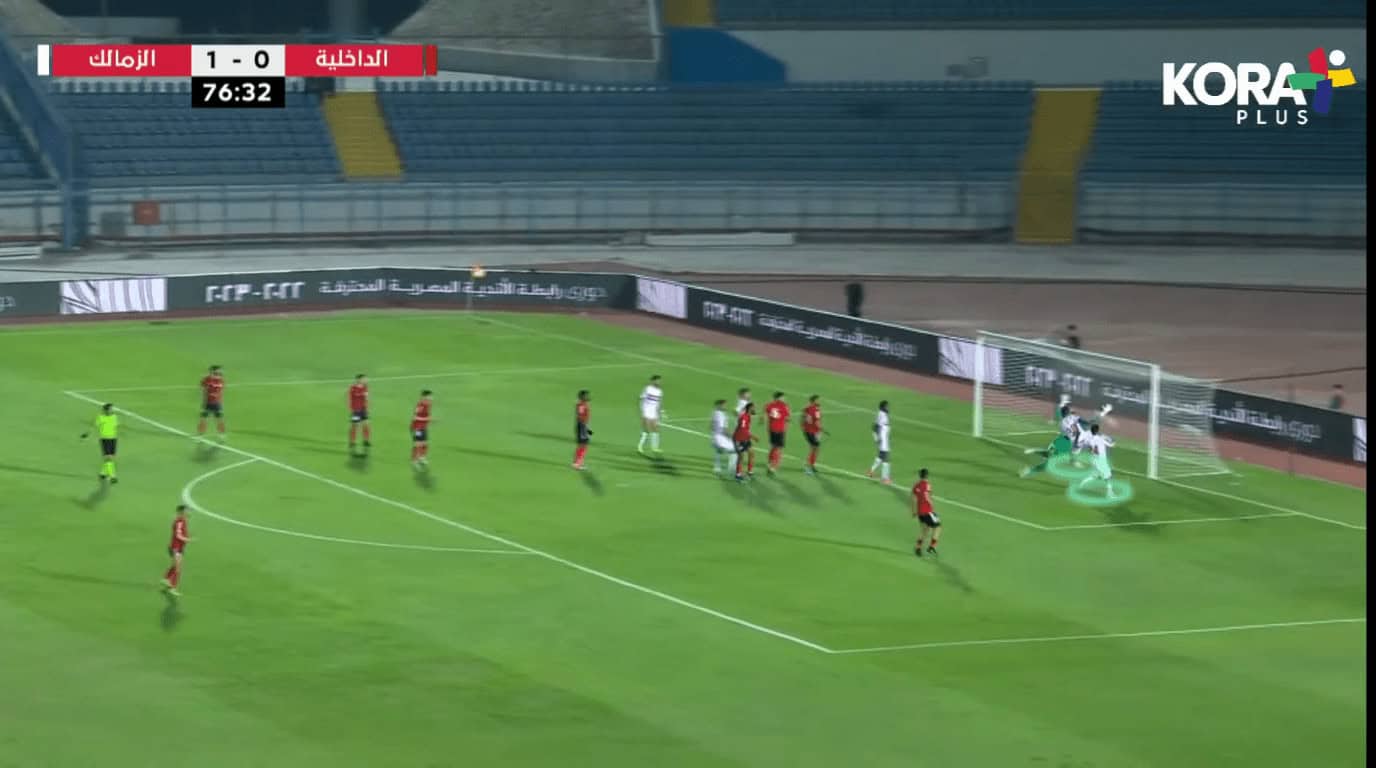
Another case is shown below, where a 3v1 situation tries to attract more defenders outside the box, which is another use of short corners, where the targeted area is in black, as shown in the first photo. In the second photo, the different trick here is that the targeted player, in green, stands at the back at first, then moves forward without marking.
In the third photo, when Zamalek’s player receives the short pass, The opponent’s player, in a green arrow, leaves his marker to reach him, but he is too late. The player in black moves to the near post to attract the defenders’ attention. In contrast, the player in yellow stands on the far post to block any defender trying to catch the targeted player in red, who comes from the back without any markers. We should know that the out-swinging cross helps in that because it makes it difficult for defenders to see the ball and the opponent, who is behind him, at the same time.
In the fourth photo, the green block is clear, but the cross is more far, so the targeted player is forced to play a cross.
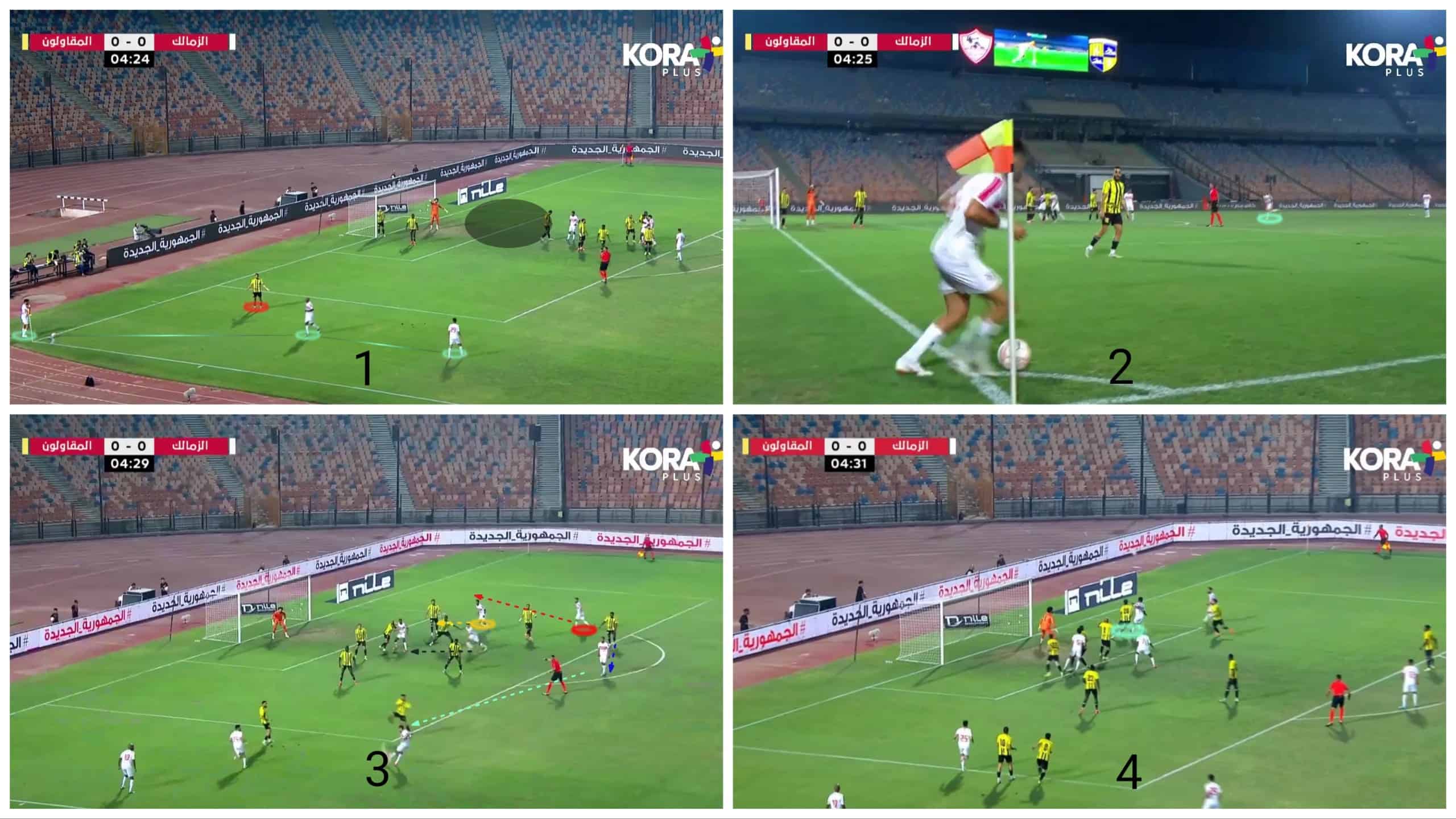
In the following case, the opponent is forced to defend short corners with three players in green, as shown in the first photo. Still, Zamalek is ready to attack this area with four players, which makes the opponent’s rebound defender hesitant, giving time for Zamalek’s player to receive the short pass. In the same first picture, the two targeted players, in blue, are ready to attack the far post, while the two ‘yellow’ attackers come from the rebound zone to the near post to attract the defenders’ attention.
In the second picture, the two zonal players move forward on the near post, which makes them out of the game. As we mentioned above, the man who marks the green-targeted player leaves him to follow the free player in black, who comes from the rebound zone. In the third picture, the red player is free with the help of the ‘green’ player’s block, but the headed shot is out next to the post, as shown in the fourth picture.
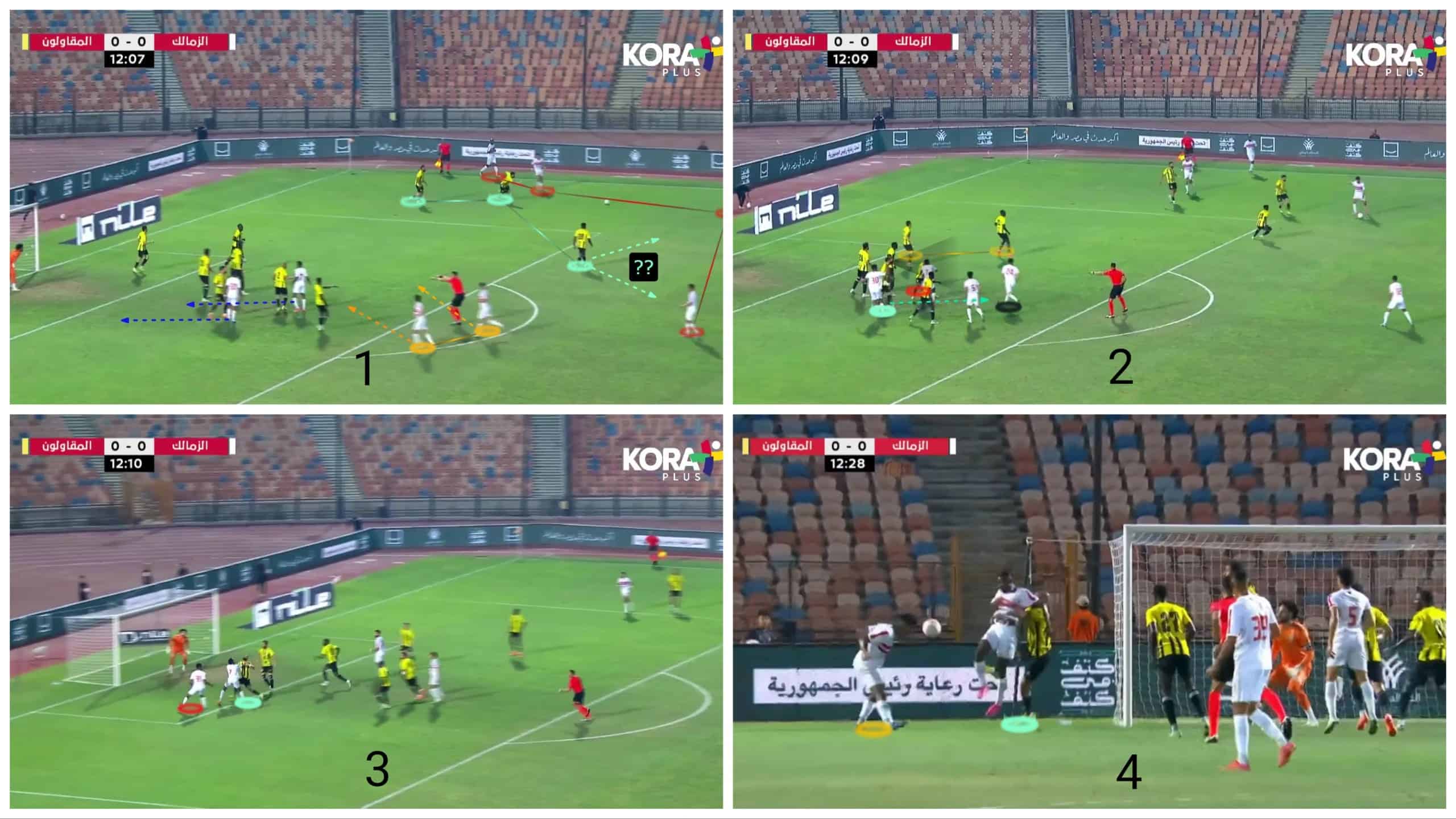
This case is similar to the previous one. Ahmed Fatouh shoots the ball directly, which shows the diversity and freedom in Zamalek’s corner routines, exploiting the best three players in the team, Shikabala, Fatouh and Zizo, as short options.
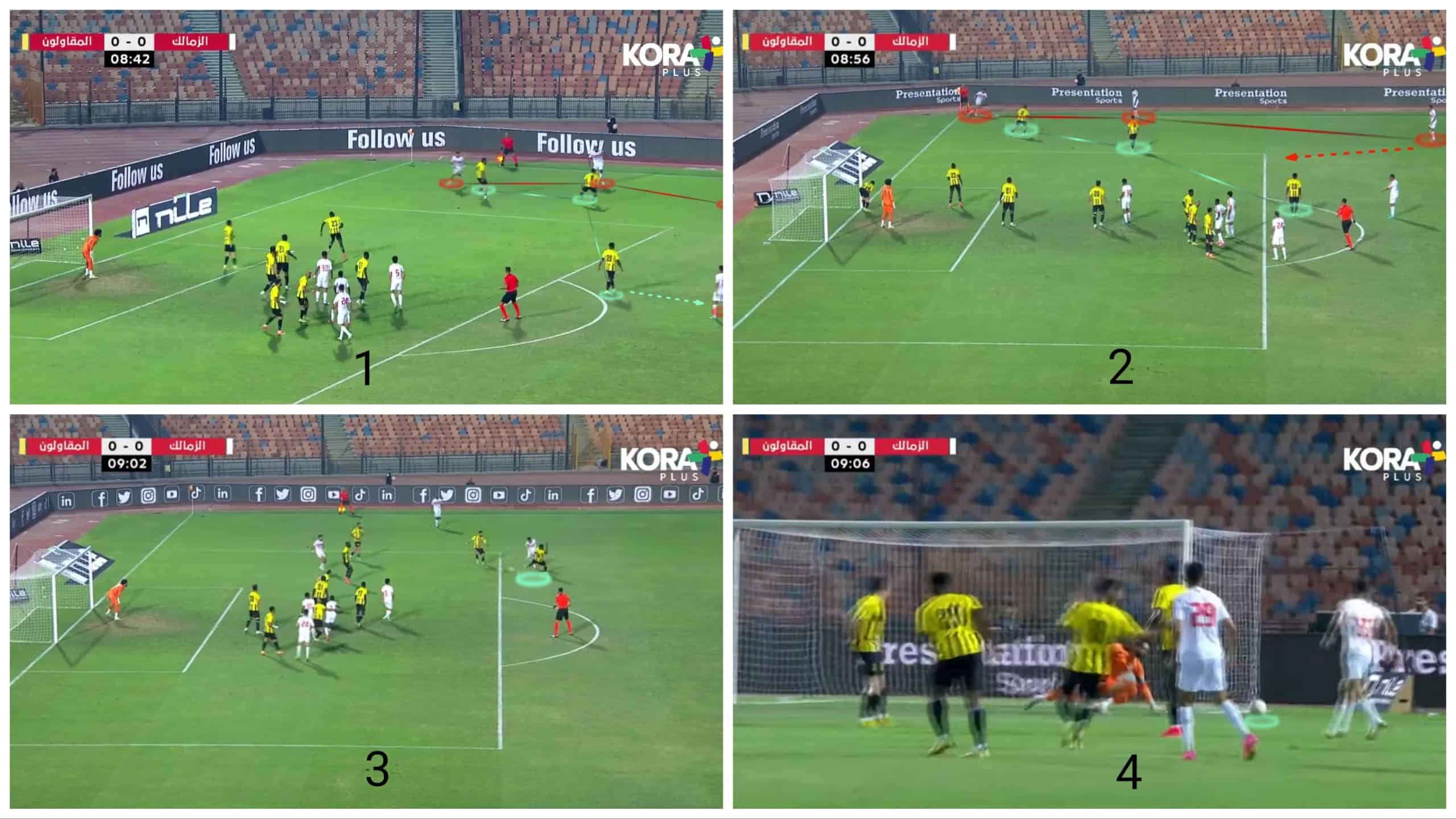
It should be mentioned that Osorio prefers quick corners before the opponent’s organisation to make a 2v1 situation, as in the first picture, or to play it directly into the box, as shown in the second picture. The third picture shows that Zamalek’s attackers are always ready for fast corners as we see the striker, in green, without marking, then it is a goal, as shown in the fourth picture.
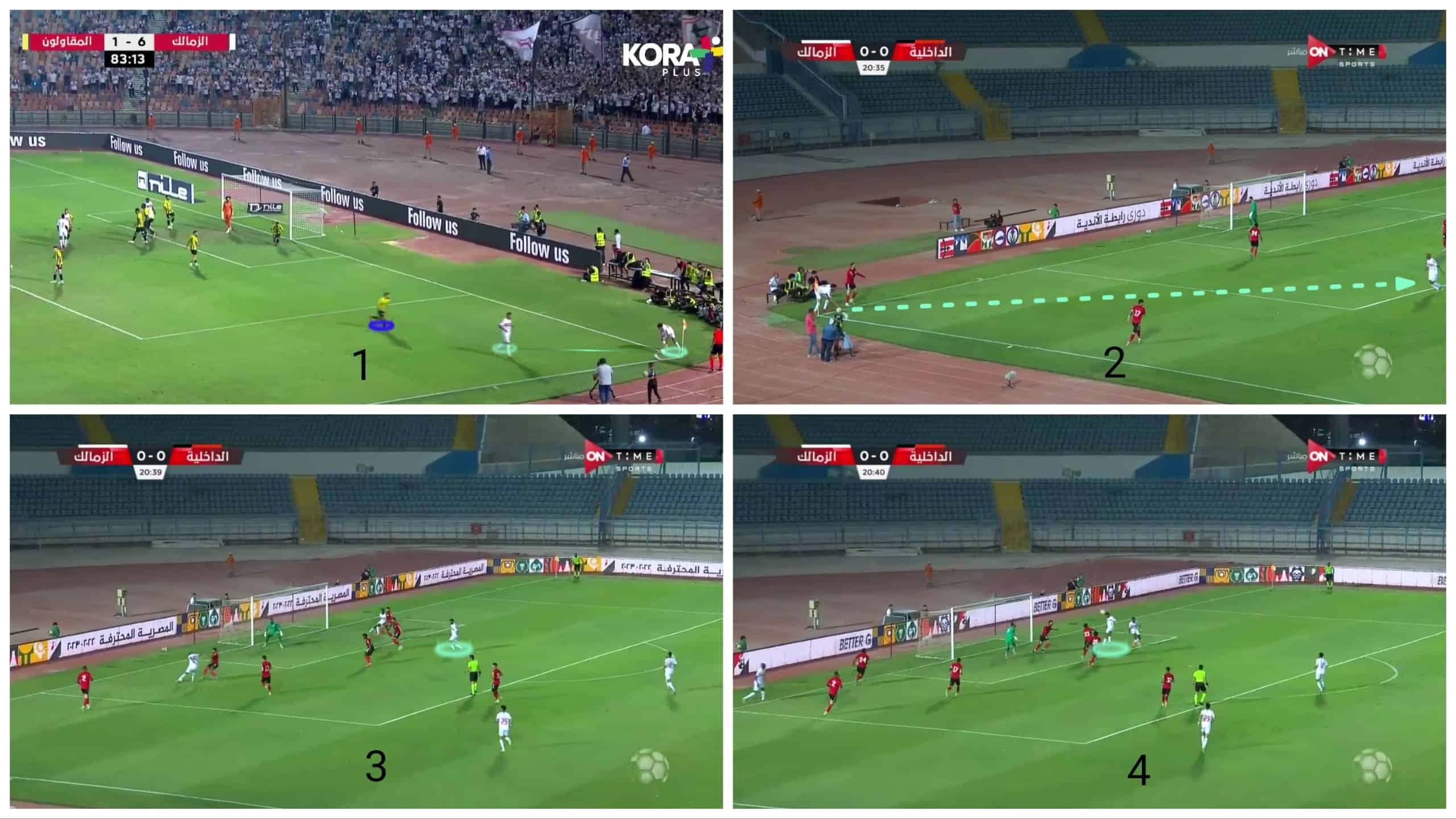
Overloading
Overloading is one of the ways that Osorio prefers to provide numerical superiority in the targeted area. In the following case, the three ‘yellow’ players attack the targeted area. It is clear that Hossam Abdelmaguid comes from a long distance, giving him time and momentum to jump. He also uses his mate as a screen, giving him time to take the empty path with the yellow arrow.
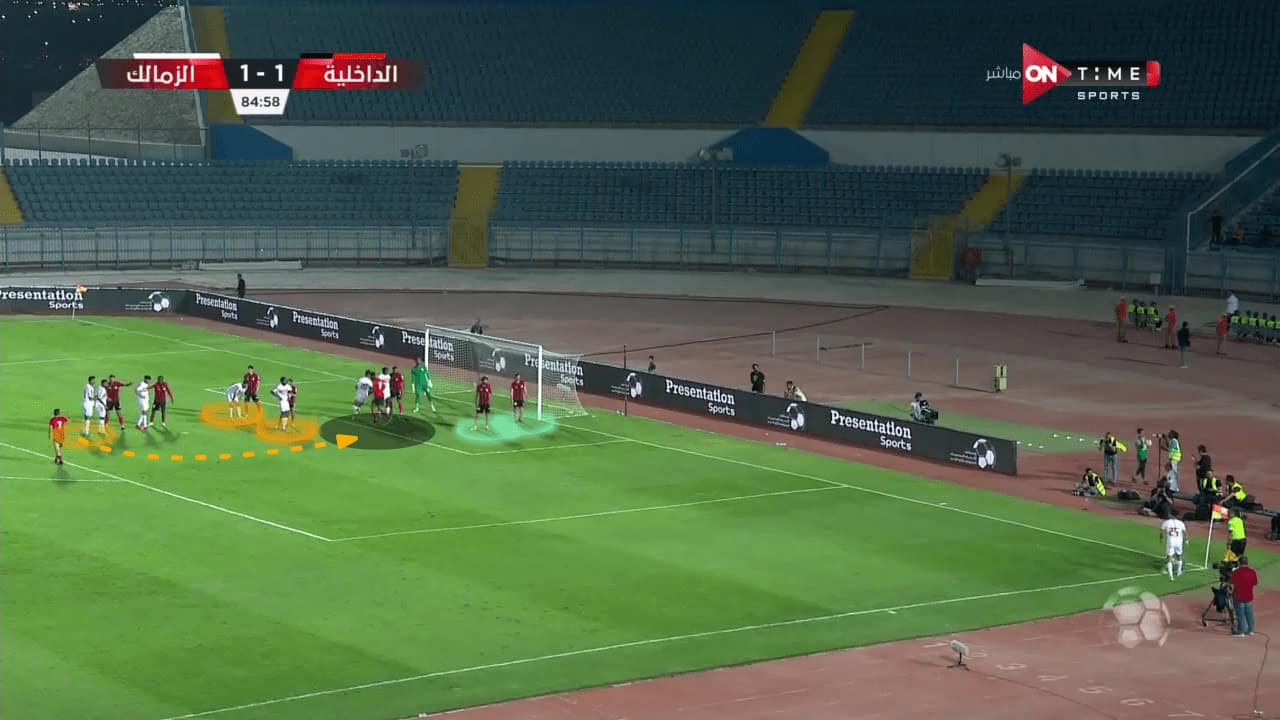
The plan works, but the cross is not good enough, as shown below.
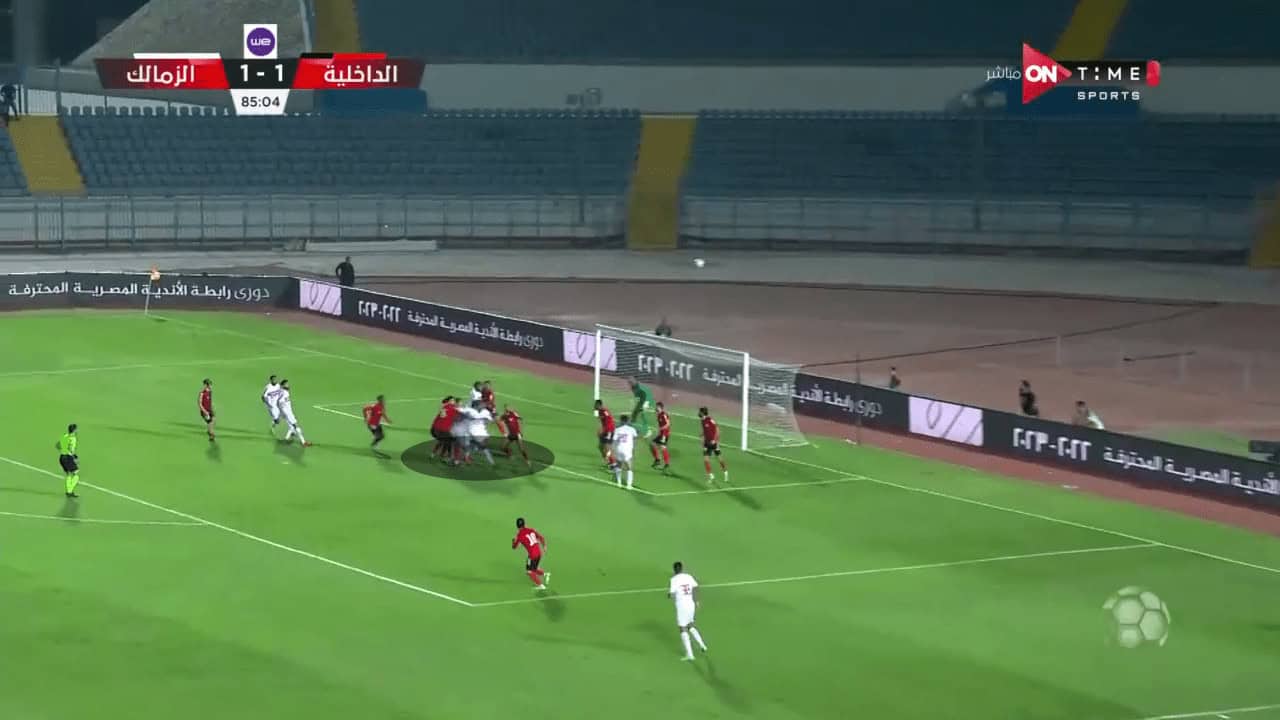
Some teams defend with a hybrid system, as shown below in the first photo, where the opponent defends with four zonal defenders in green, three man markers in blue, a ‘green’ player to defend the rebound zone and a ‘yellow’ player to defend the short option with a second player. Still, he didn’t have time to go back.
Osorio’s side uses the same idea of overloading as shown in the second photo by attacking the targeted area with three ‘yellow’ players, 2 to attract the defenders and the third, the best, comes from a distant area. The plan works in the third photo and is a goal, as shown in the fourth picture.
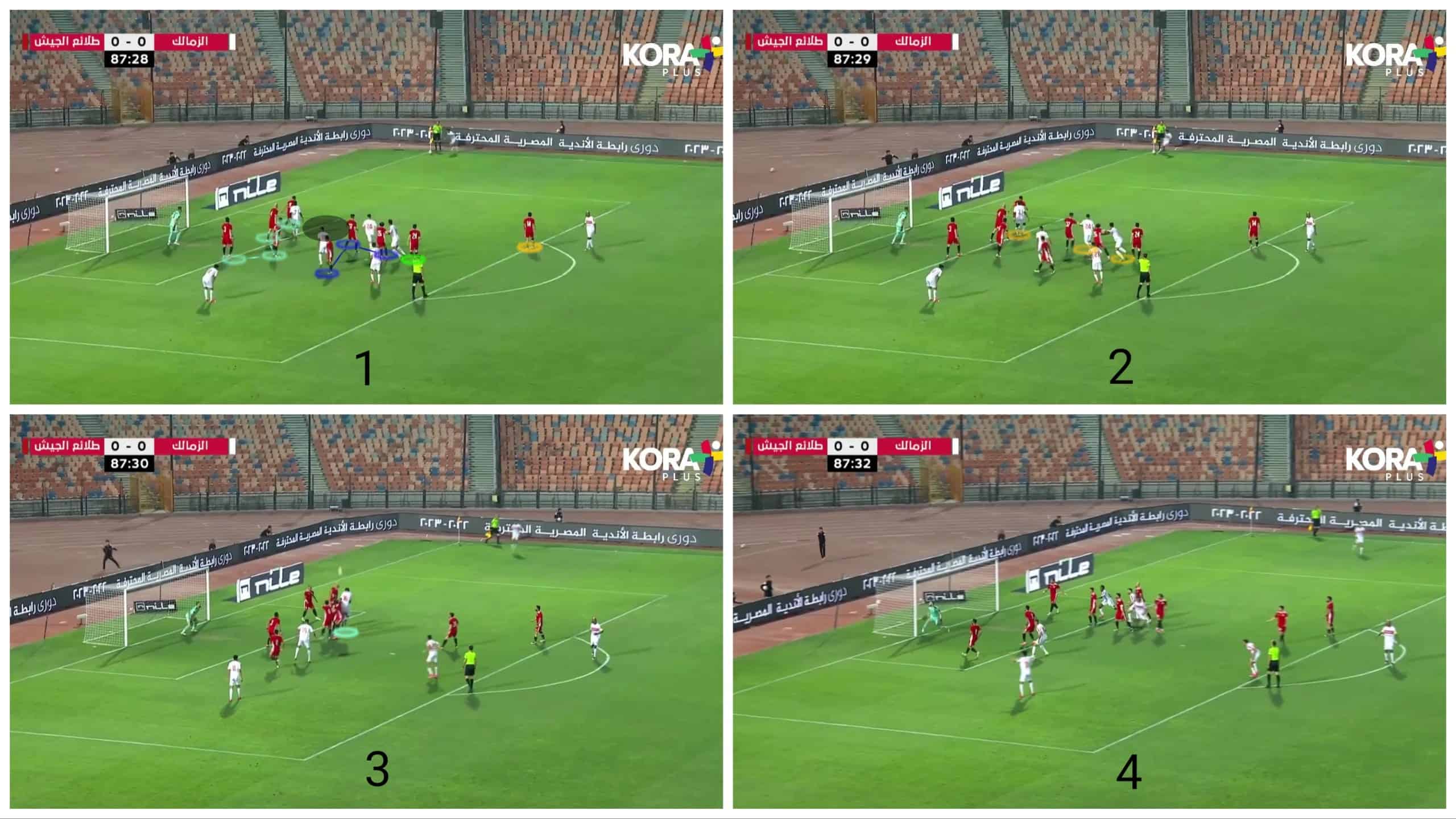
In this case, the opponent defends with only zonal marking, as shown in the first picture, where they defend with six zonal players in the first zone line. Still, the first player has duties to support the short option with his mate, with the green arrows, two players, in yellow, in the second zone line and a player, in blue to defend the rebound zone.
Shikabala moves to the short area in the second photo to attract the three ‘green’ players, two for short options and one for the rebound option. Zamalek use the same idea: overloading the targeted site with the three ‘yellow’ players. In the third photo, the two ‘green’ players attract the first zone’s two defenders, and the ‘yellow’ player comes with his momentum. In the fourth picture, the plan works, but the ball hits the targeted player’s shoulder, not his head.
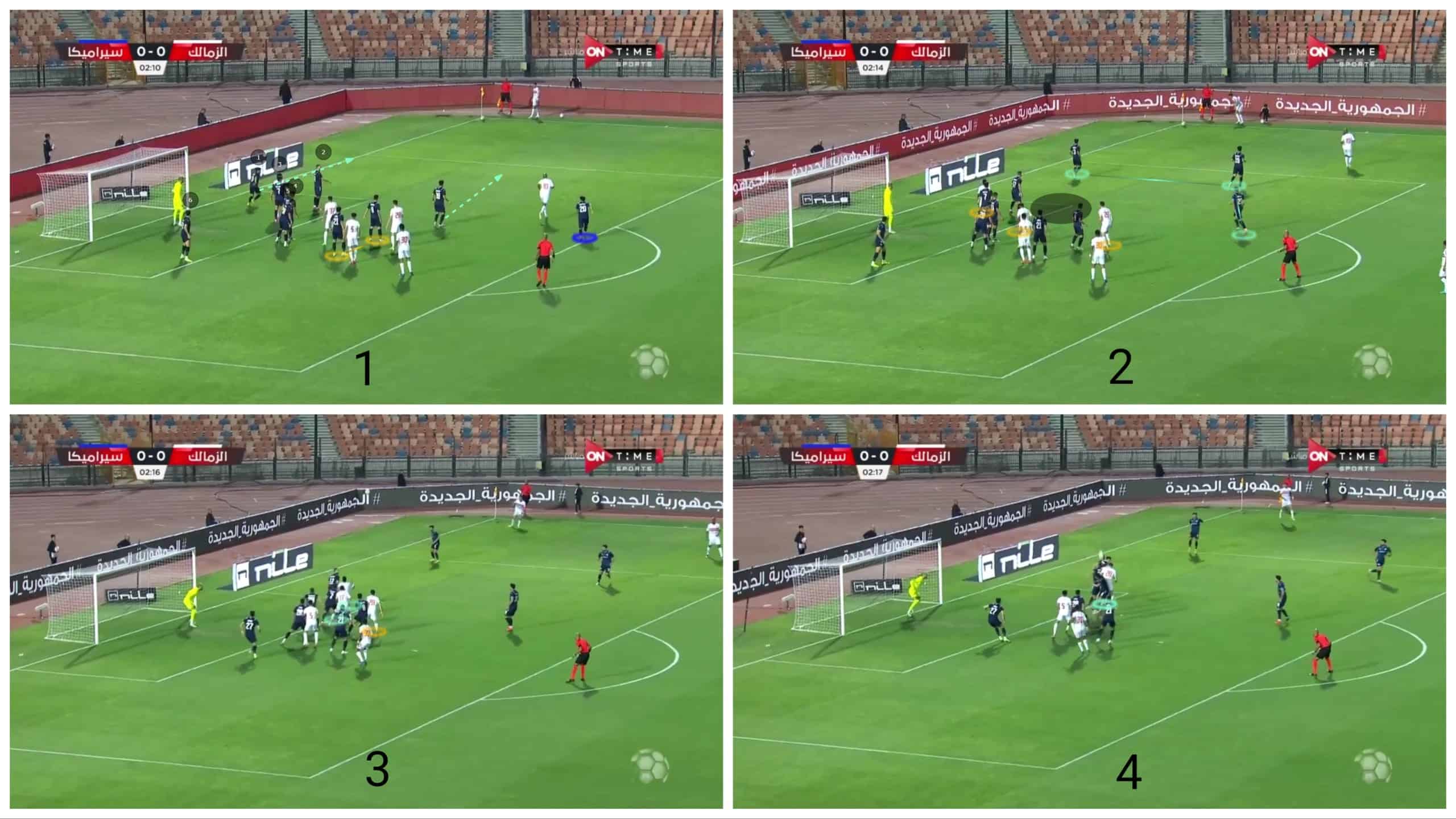
In direct crosses, especially on the far post, we should mention that Zamalek prefer out-swinging crosses to make them far from the goalkeepers and to make it difficult for markers to mark the attackers and the ball at the same time which gives the attackers a better chance of winning first touch, as shown below.
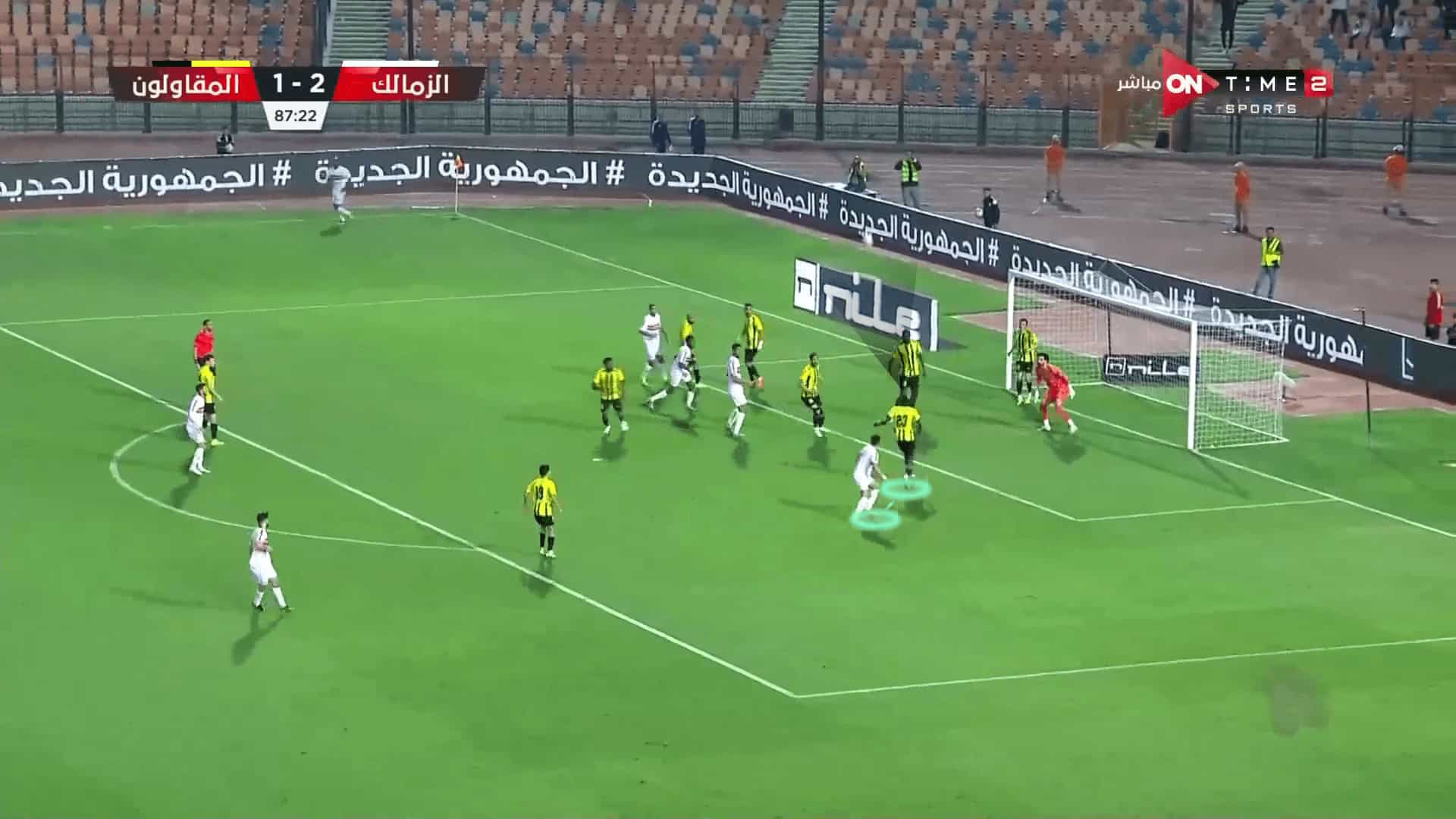
Exploiting gaps in the zonal systems
In the first picture, It is the same previous defending scheme by six players in the first zone line, in green, while one of them has duties to defend the short corner with his mate with black arrows, two players in the second zone line in red, and a ‘yellow’ player in the rebound zone.
In the second picture, Zamalek’s idea is to target the large black area between the last two defenders in the first zone line with Seifeddine Jaziri (yellow arrow) with the help of three attackers. The one with the blue arrow goes behind the last defender to attract his attention, preventing him from catching the targeted player.
In contrast, the second player, in red, blocks the third zonal player from the far post preventing him from stepping back. The most important one is El-Wensh, in green, who acts as he goes to the near post, then returns between the two-second zone’s defenders, with green arrows, in front of the second player in the first zone line to attract his attention.
In the third picture, the red-targeted player is free because the ‘blue’ player blocks the last defender. El-Wensh, in yellow, attracts the second defender in the first zone line and the two-second zone defenders. Finally, the ‘green’ player draws the third defender in the first zone line. In the fourth picture, the plan works, but the goalkeeper saves the ball.
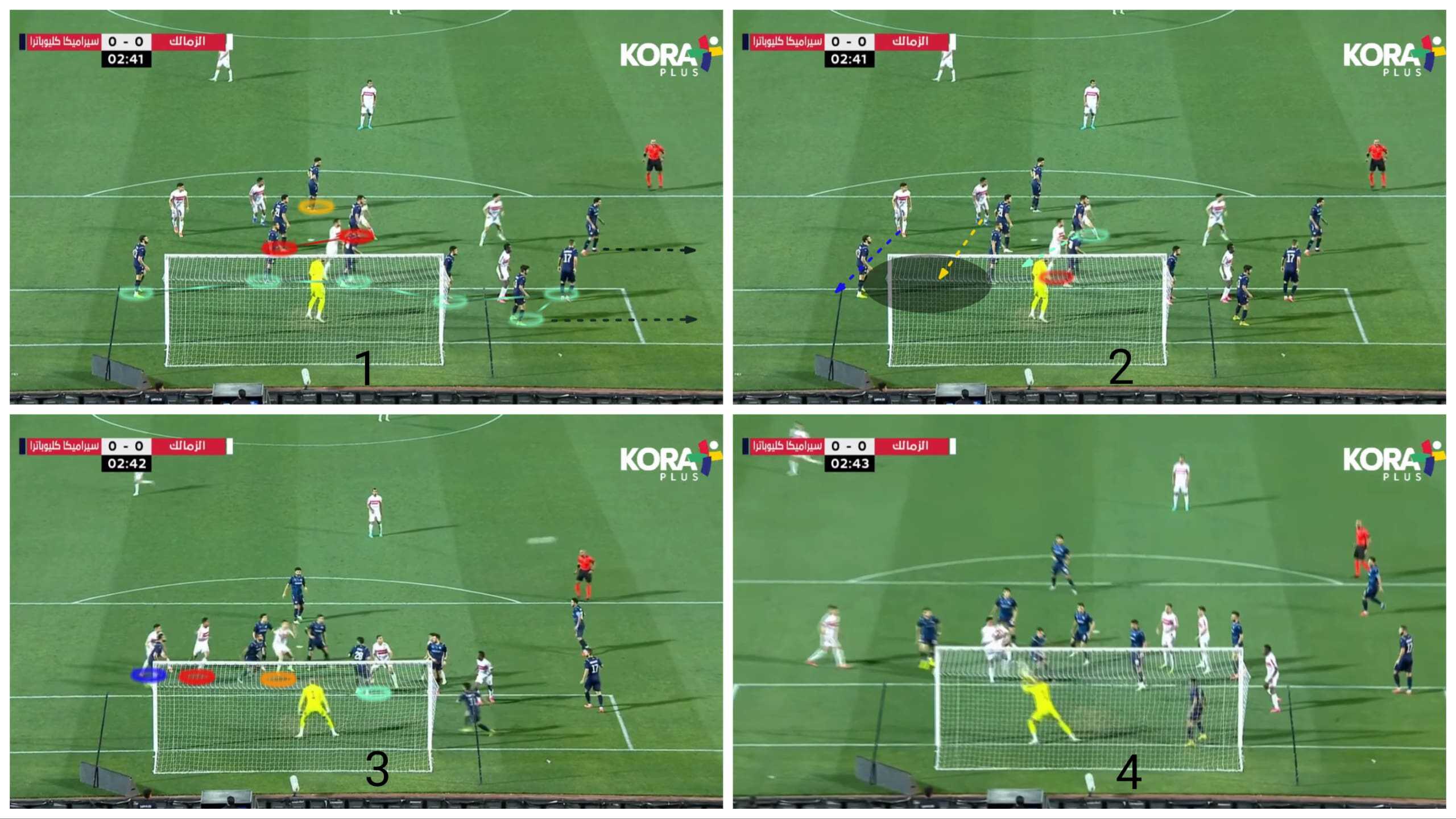
Conclusion
This analysis has shown Osorio’s tactics in attacking corner kicks and their reliance on many routines, which led to an improvement in Zamalek’s corner kicks.
Osorio has overcome the team’s lack of aerial threats with many tricks to isolate attackers away from the defenders and attract as many players as possible outside the area to defend against short corners. He also resorted to out-swinging corners to make it difficult for the defenders to follow the ball and the attackers simultaneously and keep crosses away from the goalkeepers.
Zamalek scored against the man-marking defending system, the zonal system, and the hybrid system, which indicates the diversity of Zamalek’s attacking tactics in corner kicks.

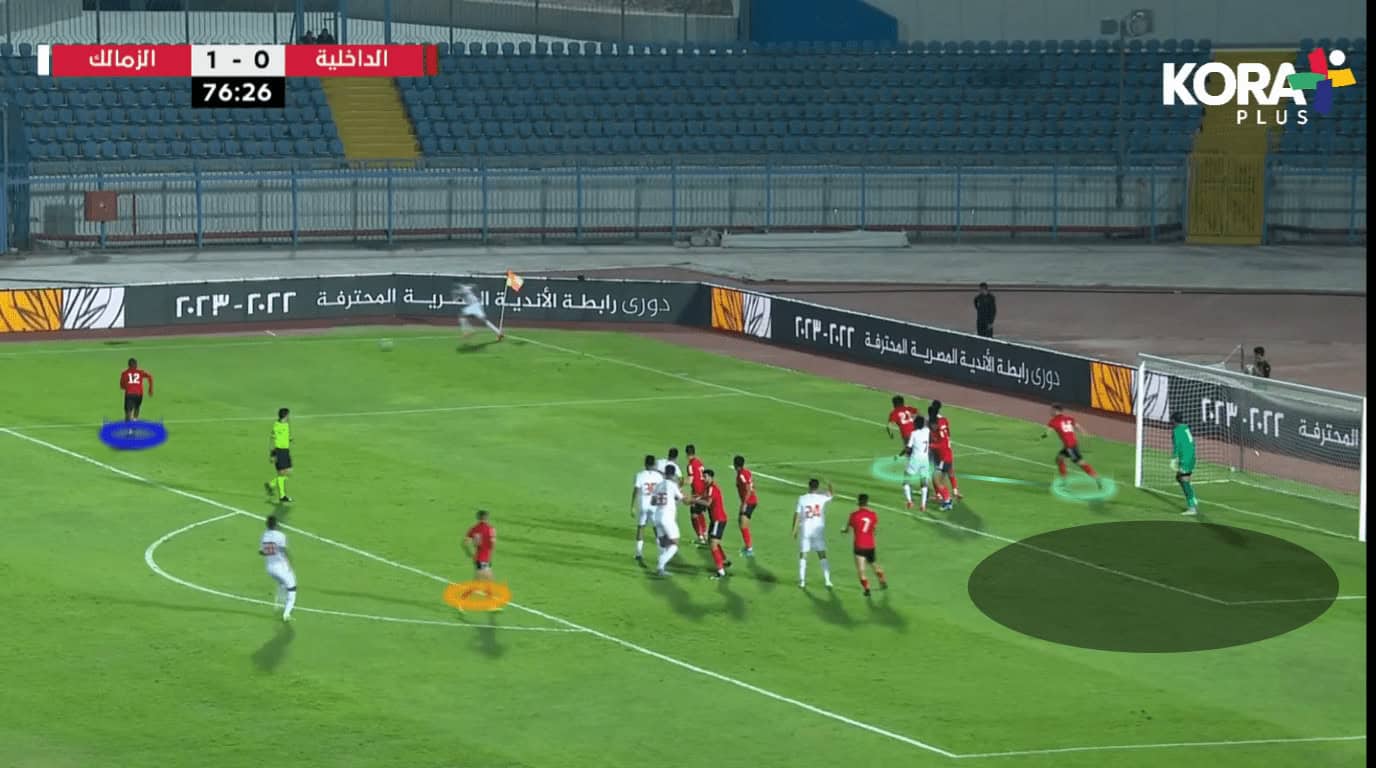




Comments